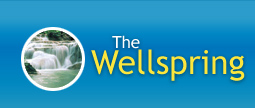 |
|
 |
Creating an Aerobic Exercise Program (Part D)
How Much Is Too Much?There are several good ways to determine if you are exercising too hard: - Breath test.
If you can still talk comfortably as you are exercising, you are
probably not overexerting yourself. If not, you are training too hard
and need to slow down.
- If you experience health problems like faintness, dizziness, nausea, tightness or pain in the chest, severe shortness of breath, or loss of muscle control, stop exercising immediately and seek medical attention.
- Heart-rate recovery.
Count your pulse five minutes after exercise. It should have returned
to 120 beats per minute or below. If it hasn't, you're pushing yourself
too hard. Count your pulse again after ten minutes. If it isn't back
below 100, ease up a little on your exercise program.
- Breathing recovery rate. If you still find yourself short of breath ten minutes after exercising, your exercise is too strenuous.
- Fatigue.
Ordinarily, exercise should be stimulating and invigorating. If you
find yourself worn out and tired all the time, it may be a sign that
you are overdoing and should slow down on your exercise program. An
elevated resting heart rate (taken before rising in the morning) is a
good gauge of overtraining. If it is higher than what is normal for
you, this indicates the need for a milder workout or more recovery time.
Don't be in a hurry!
You need time to condition your heart and muscles to the new demands.
Begin slowly, then gradually increase intensity, duration, and
frequency. Always be gentle, and enjoy yourself.
Adapted from B. Franklin, ACSM's Guidelines for Exercise Testing
and Prescription (American College of Sports Medicine, 2000), and an
out-of-print publication by Susan Stewart, RN, and Richelle
Aschenbrener, RPT., produced by the Calabasas Park (California)
Center for Cervical and TMJ/Craniomandibular Orthopedics.
|
 |
 |
|
 |
|
|
|
|
|
|
|
|
|
|
|
|
|
|
 |
|
 |
|
 |
|
 |
|
 |
|
 |
|
 |
 |
 |
 |
| |
 |
|
|
 |
|
|
 |
Personal Wellness
Wellness is about you. It is about learning to love your whole self. It is about assuming charge of your life, living in process, and channeling life more... |
|
 |
|
 |

